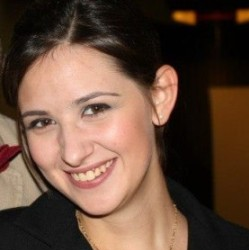Data Processing and Machine Learning for Assistive and Rehabilitation Technologies
A special issue of Bioengineering (ISSN 2306-5354). This special issue belongs to the section "Biosignal Processing".
Deadline for manuscript submissions: closed (30 April 2023) | Viewed by 20455
Special Issue Editors
Interests: cardiac signal processing; biostatistics applied to cardiac signals; artificial intelligence in medicine and biology; clinical decision support systems; wearable and portable sensors; cardiorespiratory monitoring in sport; serial electrocardiography; atrial fibrillation; fetal and newborn monitoring
Special Issues, Collections and Topics in MDPI journals
Interests: motion analysis; movement biomechanics; biosignal processing and modeling; control of biomechanical systems
Special Issues, Collections and Topics in MDPI journals
Interests: biomechanics; rehabilitation robotics; human-robot interaction; electromyography; myoelectric control; inverse dynamics; signal processing; biomedical engineering
Special Issues, Collections and Topics in MDPI journals
Special Issue Information
Dear Colleagues,
In the past few years, the rehabilitation field underwent a dramatic advancement guided by the availability of new sensing technologies and smart embedded computing (i.e., wearable devices), allowing the acquisition and processing of a wide range of physiological data. This innovation supported the development of architectures used to assist clinicians in the diagnosis and treatment of pathologies that involve the neurological, musculoskeletal, and cardiorespiratory systems. This has provided new opportunities for the design and development of subject-oriented rehabilitative pathways characterized by quantitative analyses rather than clinical experience-based assessments. In this context, the literature highlights an increasing demand of technical solutions that allow the processing of data and decisions quickly, guaranteeing real time feedback information for the users and to the assistive architectures. Thus, the realization of algorithms for data processing and machine learning characterized by low computational costs represents a sizeable challenge in this field. This supports the research line for the development of new filtering techniques that fuse multiple sensors’ information and extract new patterns to support clinicians in rehabilitation. This information can also be used to identify data-driven models of the detrimental effects due to a given pathology, eventually predicting the patient health state to prevent critical events. Hence, the aim of this Special Issue is to collect original research and review papers regarding the use of data processing and machine learning techniques that allow us to overcome the limits of the already available rehabilitative treatments. Submissions can also include the development of filtering techniques and machine learning models with a particular focus on real time applications for assistive technologies. Moreover, research involving data-driven models for the treatment of neurological, musculoskeletal, and cardiorespiratory disorders or disease are particularly welcome.
Potential topics include but are not limited to the following:
- real time data processing in rehabilitation scenarios;
- machine learning and data-driven models for treatment delivery;
- artificial intelligence in medical robotics;
- neurological, musculoskeletal, and cardiorespiratory diseases effects modeling;
- architectures for telemedicine;
- computer-aided rehabilitation;
- smart assistive technologies;
- data patterns discovery for improving rehabilitation treatments;
- pattern recognition based neuromuscular control;
- embedded machine learning for medical technologies.
Dr. Agnese Sbrollini
Dr. Alessandro Mengarelli
Dr. Andrea Tigrini
Guest Editors
Manuscript Submission Information
Manuscripts should be submitted online at www.mdpi.com by registering and logging in to this website. Once you are registered, click here to go to the submission form. Manuscripts can be submitted until the deadline. All submissions that pass pre-check are peer-reviewed. Accepted papers will be published continuously in the journal (as soon as accepted) and will be listed together on the special issue website. Research articles, review articles as well as short communications are invited. For planned papers, a title and short abstract (about 100 words) can be sent to the Editorial Office for announcement on this website.
Submitted manuscripts should not have been published previously, nor be under consideration for publication elsewhere (except conference proceedings papers). All manuscripts are thoroughly refereed through a single-blind peer-review process. A guide for authors and other relevant information for submission of manuscripts is available on the Instructions for Authors page. Bioengineering is an international peer-reviewed open access monthly journal published by MDPI.
Please visit the Instructions for Authors page before submitting a manuscript. The Article Processing Charge (APC) for publication in this open access journal is 2700 CHF (Swiss Francs). Submitted papers should be well formatted and use good English. Authors may use MDPI's English editing service prior to publication or during author revisions.
Keywords
- rehabilitation
- telemedicine
- robotics
- biomedical signal processing
- embedded machine learning
- neuromuscular control
- assistive technologies








